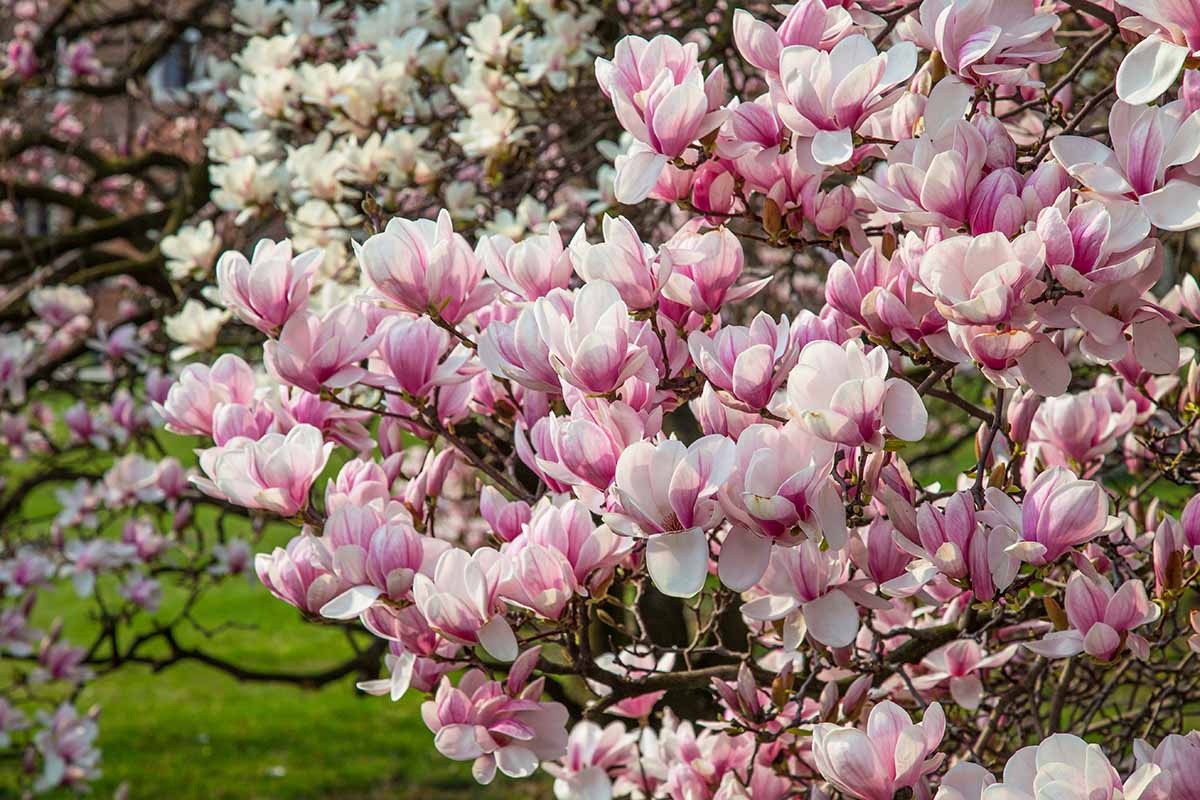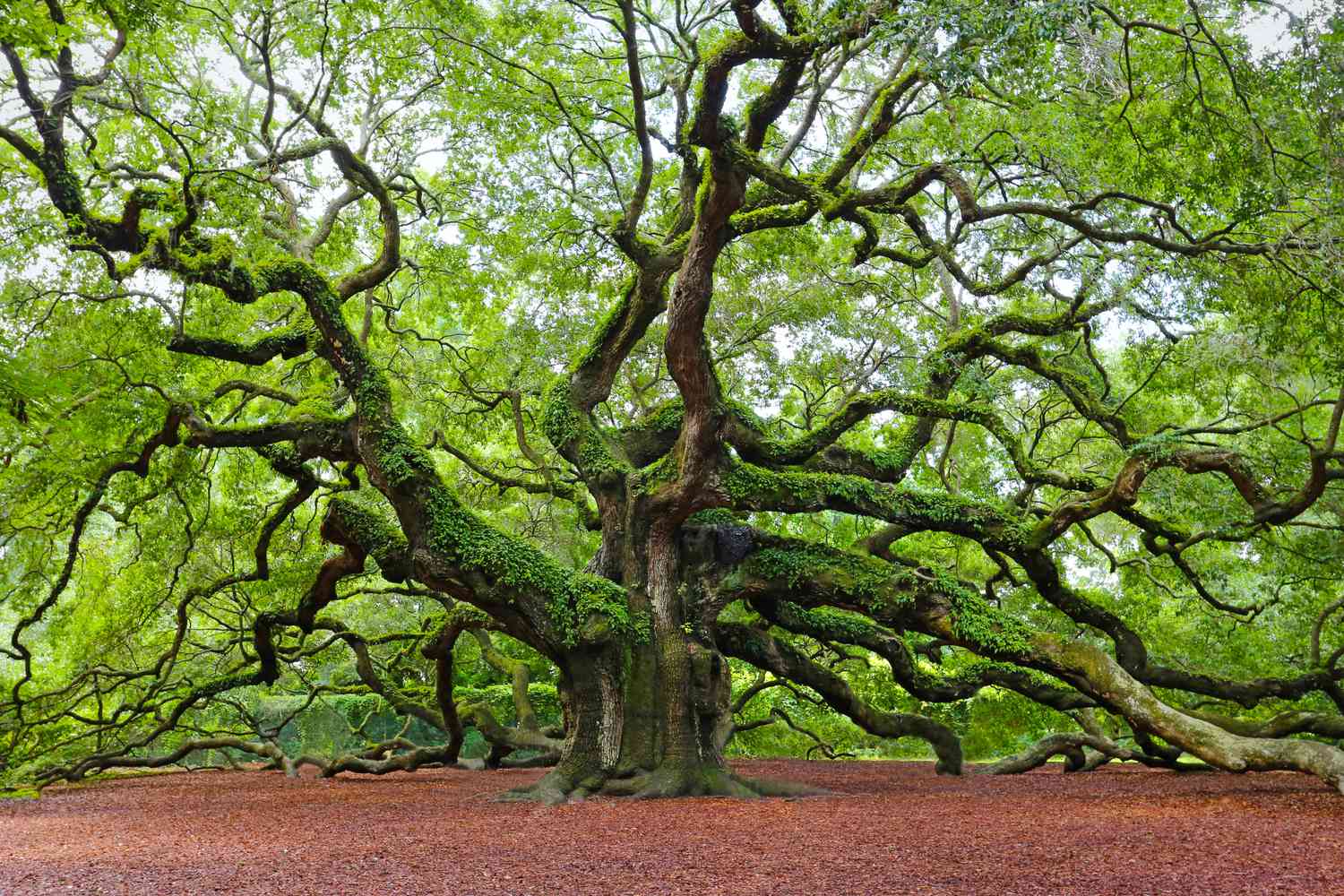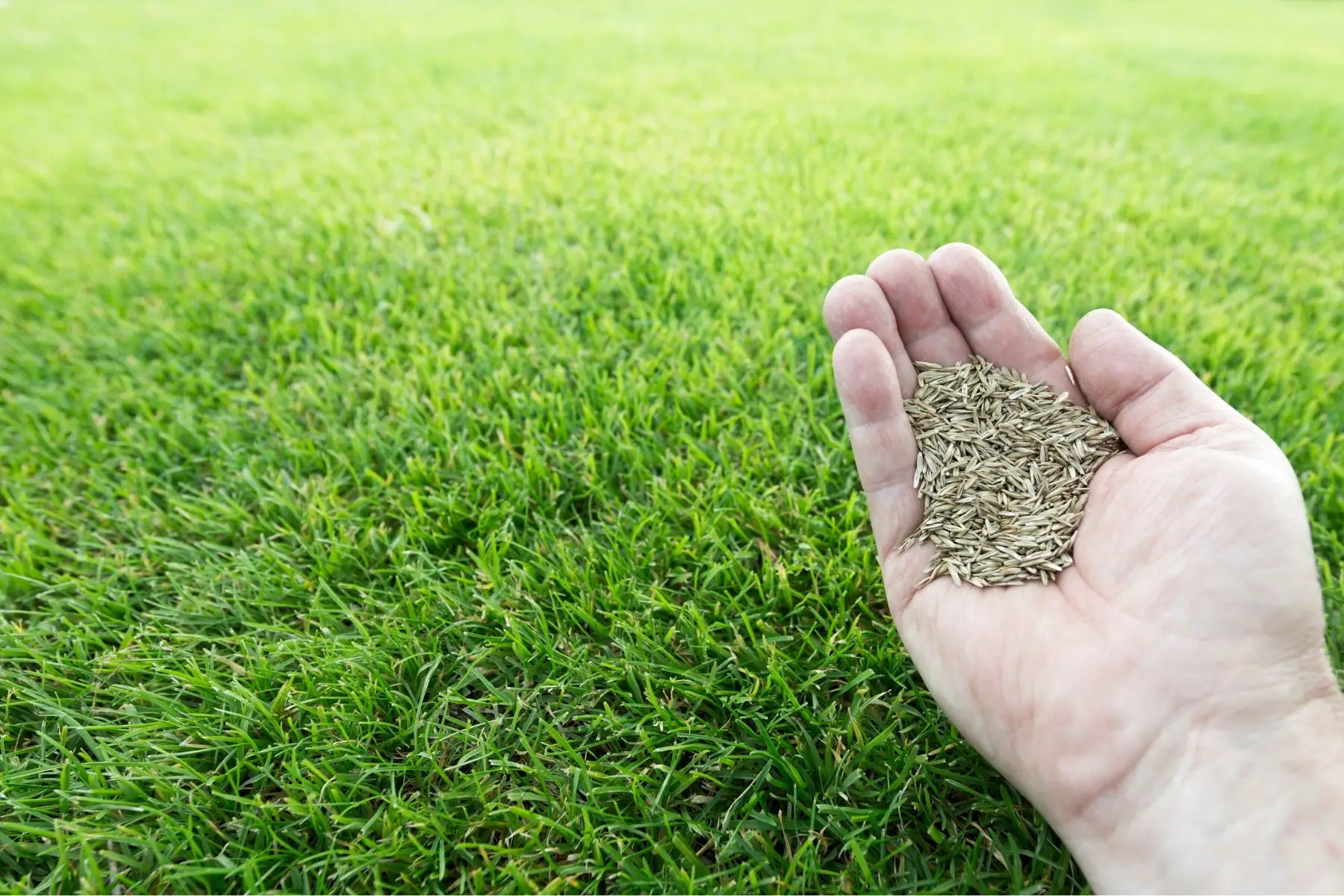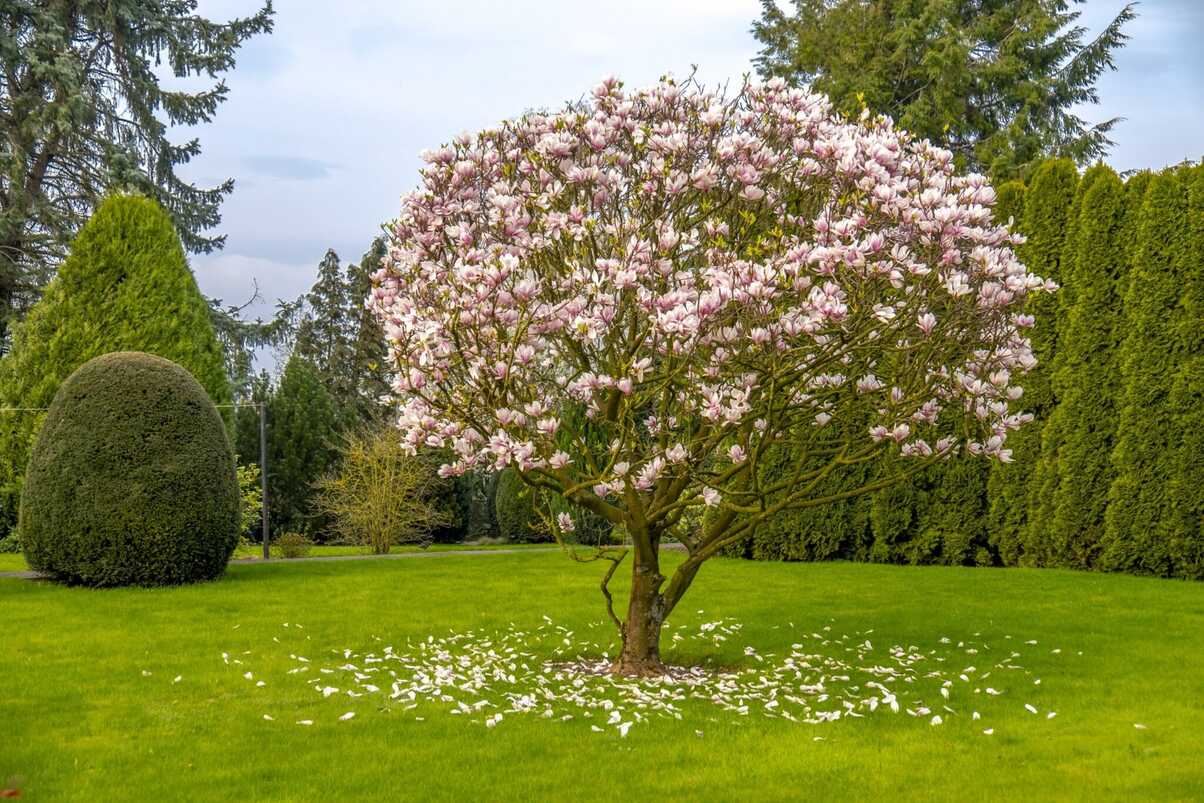Home>Garden Design>Landscape Design>How Long Do Magnolia Trees Take To Grow


Landscape Design
How Long Do Magnolia Trees Take To Grow
Published: October 30, 2023
Discover the timeline for magnolia tree growth in your landscape design. Find out how long it takes for these beautiful trees to reach their full potential.
(Many of the links in this article redirect to a specific reviewed product. Your purchase of these products through affiliate links helps to generate commission for Chicagolandgardening.com, at no extra cost. Learn more)
Table of Contents
- Introduction
- Factors Affecting Magnolia Tree Growth
- Growing Magnolia Trees from Seeds
- Growing Magnolia Trees from Cuttings
- Choosing the Right Location for Magnolia Trees
- Providing Proper Care and Maintenance for Magnolia Trees
- Pruning and Shaping the Magnolia Trees
- Common Issues and Troubleshooting for Magnolia Trees
- Conclusion
Introduction
Welcome to the captivating world of magnolia trees! These magnificent trees are a cherished addition to any landscape, with their stunning blooms and graceful branches. Whether you’re an avid gardener or simply looking to enhance the visual appeal of your outdoor space, growing magnolia trees can be a rewarding experience.
In this article, we will explore the factors that affect the growth of magnolia trees, discover how to grow them from seeds and cuttings, and learn how to choose the perfect location for these beauties in your landscape. Additionally, we will dive into the essential care and maintenance practices to ensure the health and longevity of your magnolia trees.
From selecting the right variety to overcoming common issues, this comprehensive guide will equip you with the knowledge and skills needed to successfully cultivate and nurture magnificent magnolia trees. So, let’s delve into the enchanting world of magnolias and unlock the secrets to their flourishing growth!
Factors Affecting Magnolia Tree Growth
When it comes to the growth of magnolia trees, several factors play a crucial role in determining their overall health and development. By understanding these factors, you can create the ideal environment for your magnolia trees to thrive and flourish. Let’s explore some of the key factors that influence magnolia tree growth:
- Climate: Magnolia trees are native to various regions around the world and have different climate preferences. They generally prefer temperate climates with mild winters and moderate humidity. Extreme cold or hot temperatures can hinder their growth and even damage the tree. Before planting a magnolia tree, ensure that your climate is suitable for its specific requirements.
- Soil Type: The soil composition is vital for the healthy growth of magnolia trees. They prefer well-draining soils that are slightly acidic to neutral. Sandy loam or loamy soils with good water retention are ideal. Avoid clayey or waterlogged soils as they can lead to root rot and hinder growth.
- Sunlight: Magnolia trees thrive in full sun to partial shade conditions. They require at least 6 hours of direct sunlight daily for optimum growth and blooming. Insufficient sunlight can result in leggy growth and fewer blossoms.
- Watering: Proper watering is essential for the health of magnolia trees. While they are relatively drought-tolerant once established, young trees require regular watering to promote root development. Deep watering is recommended, ensuring the soil is evenly moist but not waterlogged.
- Fertilization: Magnolia trees benefit from regular fertilization to provide essential nutrients for growth. A balanced fertilizer with a ratio of N-P-K (nitrogen-phosphorus-potassium) is recommended. Apply fertilizer in early spring and again in late summer, following the manufacturer’s instructions for rates and application methods.
- Pests and Diseases: Magnolia trees are generally resistant to pests and diseases. However, they can be susceptible to issues such as scale insects, aphids, powdery mildew, and leaf spot diseases. Regular monitoring, proper sanitation, and timely treatment, if necessary, can help prevent and manage these issues.
By considering these factors and making appropriate adjustments, you can create an optimal environment for your magnolia trees to thrive. Next, we will explore how to grow magnolia trees from both seeds and cuttings, providing you with options to expand your collection or share the beauty of magnolias with others.
Growing Magnolia Trees from Seeds
If you’re up for a rewarding challenge and want to experience the full lifecycle of a magnolia tree, growing them from seeds is a great option. While it requires time and patience, the process can be incredibly satisfying. Here are the key steps to grow magnolia trees from seeds:
- Seed Collection: Collect mature magnolia pods in the late summer or early fall when they turn brown. Open the pods and remove the red seeds. Clean the seeds by rinsing them in water to remove any residue.
- Seed Preparation: To increase the germination rate, it’s recommended to scarify the seeds. This can be done by gently nicking the hard outer coating of the seed with a file or sandpaper. Soaking the seeds in water for 24 hours can also help with germination.
- Seed Germination: Fill a seed tray or small pots with a well-draining potting mix. Plant the scarified seeds about half an inch deep in the soil. Keep the soil consistently moist but not waterlogged. Place the tray or pots in a warm location with indirect sunlight.
- Seedling Care: Once the seeds germinate and tiny seedlings emerge, provide them with sufficient light. Gradually expose them to more sunlight over time. Keep the soil moist and provide regular watering while avoiding overwatering.
- Transplanting: As the seedlings grow and develop a few sets of leaves, they can be transplanted into larger pots or directly into the ground. Ensure the new location offers the right amount of sunlight and well-draining soil.
- Long-term Care: Provide regular care and maintenance to the young magnolia trees, including watering, fertilizing, and protecting them from extreme weather conditions. Prune as necessary to shape the tree and encourage proper branching.
It’s important to note that growing magnolia trees from seeds can be a slow process. It may take several years for the tree to reach maturity and produce the iconic blossoms. However, if you’re willing to invest the time and effort, witnessing the transformation from a tiny seedling to a magnificent tree can be truly rewarding.
Now that we’ve explored growing magnolia trees from seeds, let’s discover another method – growing them from cuttings, which can result in faster growth and blooming.
Growing Magnolia Trees from Cuttings
If you’re looking for a quicker method to grow magnolia trees with a higher chance of success, growing them from cuttings is a viable option. By taking cuttings from a healthy magnolia tree, you can clone its desirable traits and reduce the time it takes for the tree to reach maturity and start blooming. Here’s how you can grow magnolia trees from cuttings:
- Choose the Right Season: The best time to take cuttings is during the late spring or early summer when the tree is actively growing. Look for young, healthy stems that are flexible and have not yet become woody.
- Prepare the Cuttings: Select a stem that is around 6-8 inches long and has several nodes. Make a clean, angled cut just below a node, and remove any leaves from the lower half of the cutting. You can also make a small slit at the base of the cutting to encourage root formation.
- Rooting Hormone and Medium: Dip the cut end of the cutting into a rooting hormone powder or gel to enhance root development. Prepare a well-draining rooting medium such as a mixture of perlite and peat moss or a specialized rooting mix.
- Plant the Cuttings: Make a hole in the rooting medium and place the cutting into it, ensuring that at least two nodes are buried in the medium. Gently press the medium around the cutting to secure it in place.
- Mist and Cover: Mist the cuttings with water to keep them hydrated and create a humid environment. You can also cover the cuttings with a clear plastic bag or a plastic dome to retain moisture. Place them in a warm location with bright, indirect light.
- Care and Root Development: Keep an eye on the moisture level of the rooting medium, ensuring it remains slightly damp. Avoid overwatering to prevent rotting. It may take several weeks for the cuttings to develop roots. Be patient and resist the urge to disturb or check on them frequently.
- Transplanting: Once the cuttings have developed a healthy root system, they can be transplanted into individual pots or planted directly in the ground. Choose a location with suitable sunlight and well-draining soil.
- Long-term Care: Provide regular care and maintenance to the young magnolia trees, including watering, fertilizing, and protecting them from harsh weather conditions. Prune as necessary to shape the tree and encourage healthy growth.
Growing magnolia trees from cuttings can be a successful and rewarding method. With proper care and patience, you can enjoy the beauty of magnolia blossoms sooner than if you were to grow them from seeds. Now that you know how to propagate magnolia trees from cuttings, you have the option to expand your collection or share the beauty of these trees with others.
Choosing the Right Location for Magnolia Trees
The location you choose to plant your magnolia trees can greatly impact their growth and overall health. By selecting the right spot, you can ensure your magnolia trees thrive and become the standout feature of your landscape. Consider the following factors when choosing the location for your magnolia trees:
- Sunlight: Magnolia trees need ample sunlight to flourish. Look for a location that receives at least 6 hours of direct sunlight per day. Placing your magnolia trees in a spot with too much shade can result in sparser foliage and fewer blossoms.
- Soil Drainage: Magnolia trees prefer well-draining soil to prevent waterlogging and root rot. Avoid heavy clay or compacted soils that retain excessive moisture. If your soil doesn’t drain well naturally, consider amending it with organic matter or creating raised beds to improve drainage.
- Space: Magnolia trees can grow quite large, so it’s essential to ensure they have enough room to spread their branches. Consider the mature size of the specific magnolia variety you’re planting and provide enough space for it to grow without obstruction.
- Protection from Harsh Elements: While magnolia trees are generally hardy, they can be sensitive to strong winds, especially when they’re young. Choose a location that offers some protection from harsh winds to prevent damage to the tree and its blossoms.
- Visual Impact: Magnolia trees are known for their stunning blooms, so consider placing them in a spot that allows for maximum visual impact. Whether it’s near a patio, along a walkway, or as a focal point in your garden, select a location that showcases the beauty of the magnolia tree and enhances the overall aesthetics of your landscape.
- Compatibility with Surrounding Plants: Consider the existing plants and trees in the vicinity of where you plan to plant your magnolia trees. Ensure they are compatible in terms of soil requirements, water needs, and shade tolerance. Avoid overcrowding or planting too close to other trees, as this can limit the magnolia tree’s access to nutrients and sunlight.
By carefully considering these factors, you can select the perfect location for your magnolia trees. Remember to also consider future growth and maintenance requirements when choosing a spot, as it’s important to provide ample space and access for pruning and other care practices.
Now that you know how to choose the right location for your magnolia trees, let’s explore the essential care and maintenance practices to ensure their continued health and growth.
Providing Proper Care and Maintenance for Magnolia Trees
To ensure the long-term health and vibrancy of your magnolia trees, proper care and maintenance are essential. By following these guidelines, you can create an optimal environment for your magnolia trees to thrive:
- Watering: While magnolia trees are relatively drought-tolerant, consistent watering is crucial during their establishment period. Water deeply to encourage deep root growth, especially during dry spells. However, avoid overwatering, as it can lead to root rot. Monitor the moisture level of the soil and adjust your watering accordingly.
- Fertilization: Magnolia trees benefit from regular fertilization to support healthy growth. Apply a balanced, slow-release fertilizer in early spring before new growth appears. Follow the instructions on the fertilizer package for the appropriate application rate and frequency. Avoid excessive fertilization, as it can lead to excessive growth without proper maturity.
- Mulching: Apply a layer of organic mulch around the base of your magnolia trees. This helps retain moisture, regulate soil temperature, suppress weed growth, and enhance overall soil health. Keep the mulch a few inches away from the trunk to prevent moisture-related issues.
- Pruning: Pruning magnolia trees should be minimal and done in late winter or early spring before new growth begins. Remove dead or damaged branches, as well as any crossing or overcrowded branches. Thinning the canopy can improve air circulation and reduce the risk of disease. Additionally, avoid pruning during the summer as it can disrupt the tree’s blooming potential for the following year.
- Pest and Disease Control: Magnolia trees are generally resilient to pests and diseases. However, some common issues include scale insects, aphids, powdery mildew, and leaf spot diseases. Regularly inspect your magnolia trees for signs of pests or diseases and take appropriate measures for control. This may involve using organic insecticides, improving air circulation, or removing infected leaves or branches.
- Winter Protection: In colder climates, young or newly planted magnolia trees may benefit from winter protection. Apply a layer of organic mulch around the base of the tree and wrap the lower trunk with burlap to protect against extreme cold temperatures and frost damage.
By following these care and maintenance practices, you can promote the overall health and vigor of your magnolia trees. Remember to monitor them regularly, addressing any issues promptly, and providing the necessary care specific to your magnolia tree variety.
Now that you’re equipped with the knowledge to care for your magnolia trees, let’s explore the importance of pruning and shaping them for optimal growth and aesthetics.
Pruning and Shaping the Magnolia Trees
Pruning plays a vital role in maintaining the health, shape, and overall appearance of magnolia trees. Proper pruning helps promote healthy growth, improves air circulation, and enhances the natural form of the tree. Here are some guidelines for pruning and shaping your magnolia trees:
- Timing: Prune magnolia trees in late winter or early spring before new growth begins. Avoid pruning during the summer, as it can disrupt the tree’s blooming potential for the following year.
- Removing Dead or Diseased Branches: Start by removing any dead, damaged, or diseased branches. These branches not only detract from the tree’s appearance but can also serve as entry points for pests and diseases.
- Thinning the Canopy: Thin the canopy of the magnolia tree by selectively removing some branches. This helps improve air circulation and sunlight penetration, reducing the risk of fungal diseases. Aim to maintain an open and airy structure without excessively thinning the tree.
- Shaping: Magnolia trees have a naturally graceful form, but you can shape them to enhance their appearance and fit within your landscape. Consider the desired shape (such as round, pyramidal, or multi-stemmed) and carefully prune accordingly. Preserve the natural beauty of the magnolia tree while gently guiding its growth.
- Avoid Over-Pruning: While pruning is important, it’s crucial not to over-prune magnolia trees. Excessive pruning can lead to stress, reduced blooming, and weakened branches. Remember, the goal is to maintain the tree’s natural form and enhance its beauty, rather than radically altering its shape.
- Proper Pruning Techniques: Use sharp, clean pruning tools to make smooth cuts and minimize the risk of disease transmission. Prune just above a bud or lateral branch junction, making a clean, angled cut. Avoid leaving stubs or creating large wounds, as they are slower to heal and more susceptible to pests and diseases.
It’s important to note that pruning requirements may vary depending on the specific variety of magnolia tree. Take the time to research and understand the growth patterns and pruning recommendations for your particular magnolia tree to ensure the best results.
By following these pruning and shaping techniques, you can help your magnolia tree maintain its health, structure, and aesthetic appeal. Regular monitoring and proper pruning throughout the tree’s lifespan will help it flourish for years to come.
Now that we’ve explored the importance of pruning and shaping magnolia trees, let’s delve into common issues that may arise and how to troubleshoot them effectively.
Common Issues and Troubleshooting for Magnolia Trees
While magnolia trees are generally hardy and resilient, they can experience a few common issues. By recognizing and troubleshooting these problems early on, you can provide the necessary care to keep your magnolia trees healthy and thriving. Here are some common issues and their corresponding troubleshooting methods:
- Yellowing Leaves: If you notice yellowing leaves on your magnolia tree, it could be a sign of nutrient deficiency, such as iron chlorosis. Treat the tree with an iron chelate fertilizer according to the manufacturer’s instructions.
- Poor Blooming: Insufficient sunlight or improper pruning can lead to poor blooming in magnolia trees. Ensure that your tree is receiving adequate sunlight and avoid over-pruning, especially during the summer. Additionally, make sure you’re not over-fertilizing, as excessive nitrogen can result in more foliage growth and fewer blooms.
- Leaf Spot Diseases: Magnolia trees can be susceptible to leaf spot diseases, such as bacterial or fungal infections. To prevent these diseases, avoid overhead watering, as the moisture can promote fungal growth. Prune affected branches and ensure proper air circulation around the tree. If necessary, treat with a fungicide based on the specific disease and follow the instructions carefully.
- Scale Insects: Scale insects can infest magnolia trees, causing yellowing leaves, sticky residue (honeydew), and stunted growth. Use insecticidal soap or horticultural oil to control the infestation, following the application instructions provided. Regularly inspect and monitor your magnolia tree for any signs of scale insects.
- Aphid Infestation: Aphids are small, sap-sucking insects that can negatively impact magnolia trees. They can cause distorted leaves, stunted growth, and the production of sticky honeydew. Remove them by spraying the affected areas with a strong stream of water or treat with insecticidal soap or neem oil as necessary.
- Root Rot: Magnolia trees can be susceptible to root rot, especially in poorly drained soils. Improve drainage by amending the soil with organic matter and avoiding overwatering. If you suspect root rot, assess the extent of the damage and consider consulting a professional arborist for guidance on appropriate treatment.
Remember that prevention is key when it comes to maintaining the health of your magnolia trees. Regularly inspect your trees, practice good cultural practices such as proper watering and pruning, and address any potential issues promptly. Providing a balanced environment and proactive care will help your magnolia trees resist and overcome these common issues.
Now that you’re equipped with knowledge on troubleshooting common issues, you can confidently care for your magnolia trees. Let’s wrap up this comprehensive guide with a recap of the key points covered.
Conclusion
Cultivating and caring for magnolia trees is a rewarding journey that allows you to witness the beauty and grace of these magnificent specimens in your very own landscape. By understanding the factors that influence their growth, such as climate, soil, sunlight, and water requirements, you can create an optimal environment for your magnolia trees to thrive.
Whether you choose to grow magnolia trees from seeds or cuttings, each method offers its own unique advantages and challenges. Growing from seeds allows you to experience the complete lifecycle of a tree, while growing from cuttings provides faster growth and blooming. Whichever method you choose, patience, proper care, and maintenance are the keys to success.
Choosing the right location for your magnolia trees is crucial to their overall health and visual impact. Consider factors such as sunlight, soil drainage, available space, protection from harsh elements, and compatibility with surrounding plants when selecting the perfect spot.
Providing proper care, including proper watering, fertilization, mulching, and pest and disease control, is essential to the long-term health and vitality of your magnolia trees. Regular pruning and shaping of the trees not only maintain their natural form but also promote healthy growth and blooming.
In this guide, we have discussed common issues that may arise with magnolia trees, such as leaf spot diseases, scale insects, aphid infestations, and root rot. By recognizing and addressing these issues promptly, you can ensure the continued health and vibrancy of your magnolia trees.
Now armed with a comprehensive understanding of the factors influencing magnolia tree growth, the methods for propagation, proper care and maintenance practices, and troubleshooting common issues, you are well-equipped to embark on your journey to successfully grow and care for magnolia trees.
So go ahead and plant these enchanting trees, watching as they grace your landscape with their radiant blooms and captivating presence. With your commitment and dedication, your magnolia trees will flourish and become a cherished centerpiece of your outdoor oasis for years to come.







